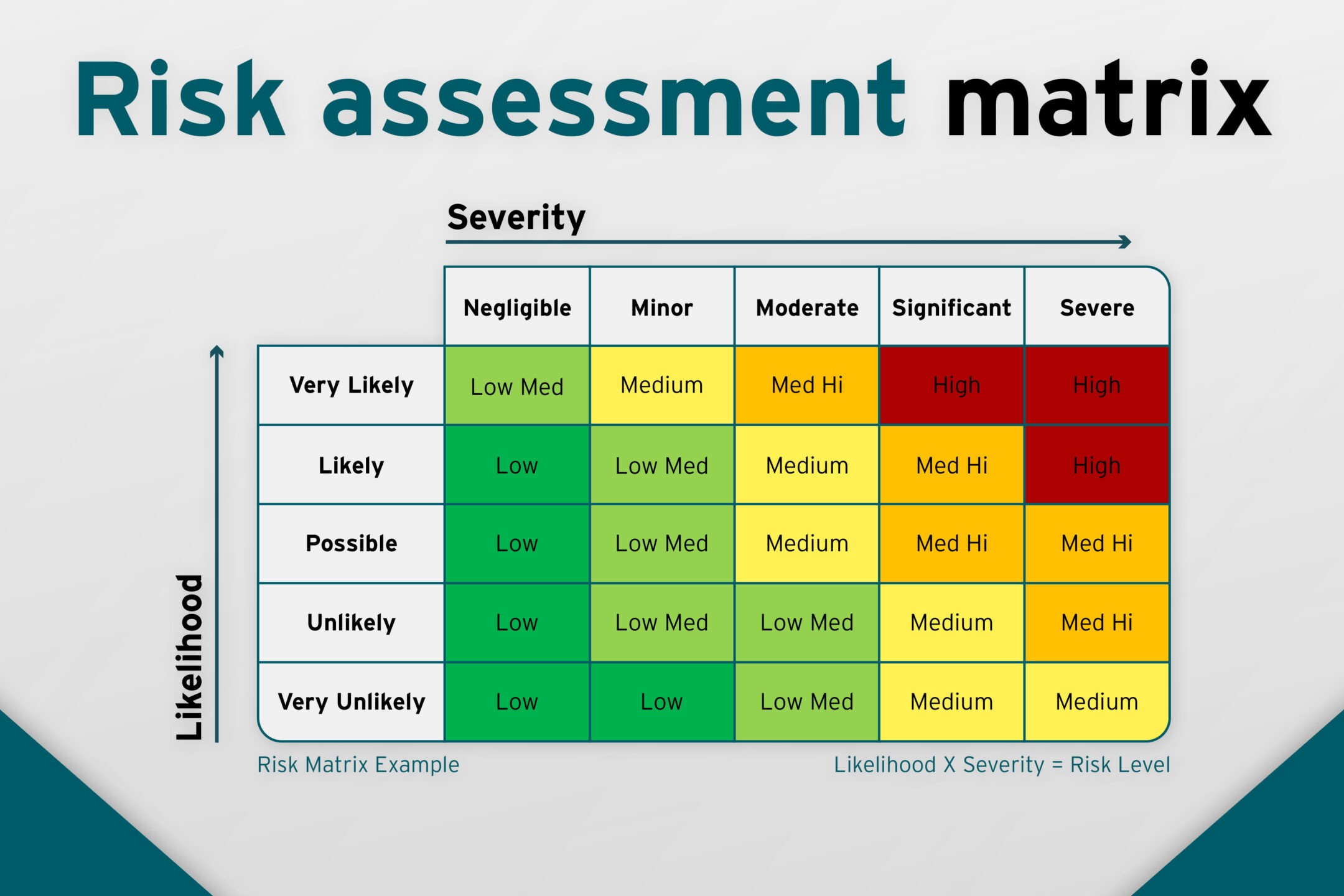
What is a risk assessment matrix? A risk assessment matrix is a tool used to evaluate and prioritize risks by considering their likelihood and impact. Imagine a grid where one axis represents the probability of an event happening, and the other shows the severity of its consequences. By plotting risks on this matrix, you can easily see which ones need immediate attention and which are less critical. This method helps organizations make informed decisions, allocate resources effectively, and minimize potential hazards. Whether you're managing a project, ensuring workplace safety, or planning an event, understanding how to use a risk assessment matrix can be a game-changer.
What is a Risk Assessment Matrix?
A risk assessment matrix is a tool used to evaluate and prioritize risks by considering the likelihood of an event and its potential impact. This matrix helps organizations make informed decisions about managing risks effectively.
- Visual Tool: The matrix is often a grid that visually represents risks, making it easier to understand and communicate.
- Likelihood and Impact: It assesses risks based on two criteria: the probability of occurrence and the severity of consequences.
- Color-Coded: Typically, the matrix uses colors like red, yellow, and green to indicate high, medium, and low risks.
- Customizable: Organizations can tailor the matrix to fit their specific needs and risk tolerance levels.
- Decision-Making Aid: It helps prioritize which risks need immediate attention and which can be monitored over time.
- Widely Used: Common in various industries, including healthcare, finance, and construction.
How to Create a Risk Assessment Matrix
Creating a risk assessment matrix involves several steps to ensure it accurately reflects potential risks and their impacts.
- Identify Risks: List all possible risks that could affect the project or organization.
- Determine Likelihood: Assign a probability score to each risk, usually on a scale from 1 to 5.
- Assess Impact: Evaluate the potential impact of each risk, also on a scale from 1 to 5.
- Plot Risks: Place each risk on the matrix based on its likelihood and impact scores.
- Color Code: Use colors to highlight the severity of each risk.
- Review Regularly: Update the matrix periodically to reflect new risks or changes in existing ones.
Benefits of Using a Risk Assessment Matrix
Using a risk assessment matrix offers several advantages that help organizations manage risks more effectively.
- Clarity: Provides a clear visual representation of risks, making it easier to understand.
- Prioritization: Helps prioritize risks based on their severity and likelihood.
- Resource Allocation: Assists in allocating resources to mitigate high-priority risks.
- Communication: Facilitates better communication about risks among team members and stakeholders.
- Proactive Management: Encourages proactive risk management rather than reactive responses.
- Compliance: Helps meet regulatory requirements for risk management.
Common Challenges in Using a Risk Assessment Matrix
Despite its benefits, using a risk assessment matrix can present some challenges.
- Subjectivity: Risk assessments can be subjective, leading to inconsistent evaluations.
- Complexity: Complex projects may have too many risks to fit neatly into a matrix.
- Over-Reliance: Relying solely on the matrix can overlook other important risk factors.
- Bias: Personal biases can influence the scoring of risks.
- Static Nature: A matrix can become outdated if not regularly reviewed and updated.
- Miscommunication: Misunderstandings can arise if team members interpret the matrix differently.
Real-World Applications of Risk Assessment Matrices
Risk assessment matrices are used in various real-world scenarios to manage and mitigate risks effectively.
- Healthcare: Hospitals use matrices to assess risks related to patient safety and medical procedures.
- Finance: Financial institutions evaluate risks associated with investments and market fluctuations.
- Construction: Construction projects use matrices to manage risks related to safety, budget, and timelines.
- IT: IT departments assess risks related to cybersecurity threats and data breaches.
- Manufacturing: Manufacturers use matrices to identify risks in production processes and supply chains.
- Event Planning: Event planners assess risks related to logistics, safety, and attendee experience.
Tips for Effective Use of a Risk Assessment Matrix
To maximize the effectiveness of a risk assessment matrix, consider these tips.
- Involve Stakeholders: Engage key stakeholders in the risk assessment process to gather diverse perspectives.
- Use Historical Data: Leverage historical data to inform risk likelihood and impact assessments.
- Regular Training: Provide regular training to team members on how to use and interpret the matrix effectively.
Final Thoughts on Risk Assessment Matrices
Risk assessment matrices are essential tools for managing potential hazards in various fields. They help identify, evaluate, and prioritize risks, making it easier to implement effective mitigation strategies. By categorizing risks based on their likelihood and impact, these matrices provide a clear visual representation of potential threats, aiding in better decision-making.
Using a risk assessment matrix can streamline the process of risk management, ensuring that resources are allocated efficiently to address the most critical issues. This proactive approach not only minimizes potential damage but also enhances overall safety and security.
Incorporating a risk assessment matrix into your planning process can significantly improve your ability to anticipate and respond to potential challenges. Whether you're in construction, healthcare, finance, or any other industry, understanding and utilizing this tool can make a substantial difference in your risk management efforts. Stay prepared, stay safe.
Was this page helpful?
Our commitment to delivering trustworthy and engaging content is at the heart of what we do. Each fact on our site is contributed by real users like you, bringing a wealth of diverse insights and information. To ensure the highest standards of accuracy and reliability, our dedicated editors meticulously review each submission. This process guarantees that the facts we share are not only fascinating but also credible. Trust in our commitment to quality and authenticity as you explore and learn with us.
